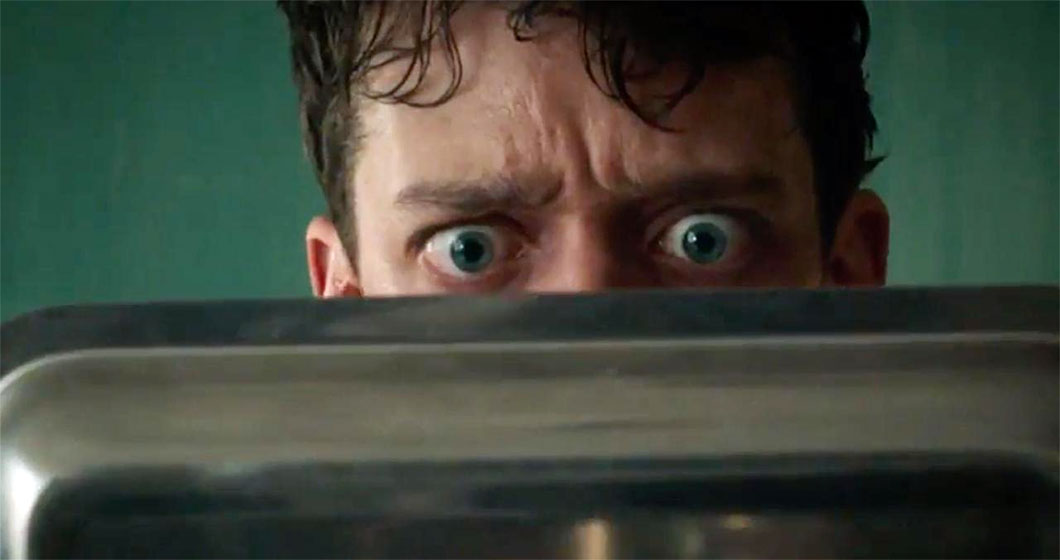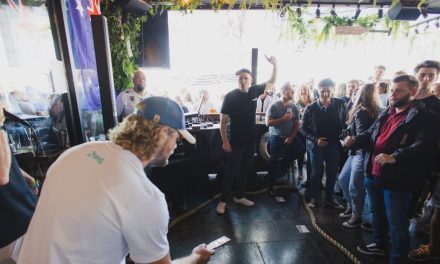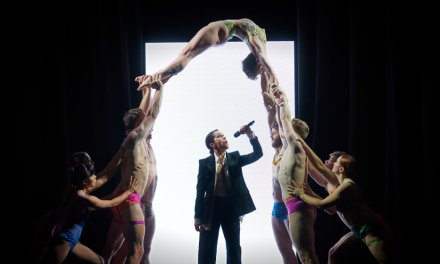The Alliance Francaise French Film Festival opening at Palace Electric might not be until Thursday 1 March, but it kicked off in very Gallic fashion at a special preview night. Yes, there was the obligatory wine and cheese, but there was, more fundamentally, a film that anyone other than the French would have struggled to make.
See You Up There, directed by Albert Dupontel, is a very sweet and often very funny farce set in the aftermath of World War I and concerned with the burial and remembrance of France’s fallen soldiers. It follows a pair of soldiers, Maillard (played by the director) and Edouard Pericourt (the astonishing Nahuel Perez Biscayart). In the last days of the war, with armistice approaching, Pericourt is horrifically disfigured in a futile attack ordered by their villainous lieutenant. Unwilling to go home to his rich, stern father, Pericourt fakes a new identity with Maillard’s help. As Maillard struggles to find work, Pericourt hatches a plan to fraudulently cash in on the nation’s post-war obsession with memorials. However, in the way of farces, it all gets very complicated and draws in a raft of new characters.
It’s a very strange subject for a comedy but it also makes perfect sense. The scale of death in WWI is something that boggles the mind. The sheer logistics of burying that many soldiers is staggering. It necessitated the creation of special divisions of government in every European country that took part. Approaching it as a comedy works since it’s a tragedy too large and awful to register. There’s an overused quote attributed to Stalin on the subject.
Also, the film’s plot concerns society’s inability to really understand death on that scale. This is part of why the film works. It’s specifically about how the horror of the war is too much for us, society, to really understand. The only response is to either reduce it to numbers, or turn it into a clean artistic image. And even when we honour it, we are commodifying it, and making ourselves complicit in the entire process.
Honestly, this is a difficult review to write. The film has so much going on, and so much to praise, and each individual part ties into the film’s themes and narratives so beautifully that it warrants an essay. So, to keep this short, these are some of the film’s many fine features, in truncated form.
The camera moves fluidly through the film, weaving in and out of sets, performing moves that are impossible without ever drawing to itself. The film’s blacks are true blacks, lit up by small light sources like candles and lanterns. The light takes on a sickly tinge when the film’s villain is about. The film also copes with one of the great challenges of making WWI films, not being able to use much gore. The film leans into it, with war being an impressionistic, frequently unrealistic flashback. The lack of blood is because the man telling the story does not want to remember the blood. It’s not realistic, neither is the film’s villain looming out of the shadows like a cartoon character, but that’s how the character remembers it. A limitation becomes an essential part of the text.
By similar token, it’s worth talking about Pericourt’s face. The wound he suffers is horrific, but we never see it. We see people’s reactions, and those are more than enough. Pericourt spends much of the film behind a series of masks he’s made, and they are exquisite. They’re designed by Cecile Kretscher and made by Helene Defline and their work is amazing. They hit that perfect sweet spot between looking great on camera and looking plausibly like something he made for himself.
Naguel Perez Biscayart also deserves a lot of praise, communicating a complex character journey with nothing more than his eyes and body language. However, such is the symbiosis between him and the masks, that it would be impossible to clearly separate which deserves credit for what. The answer is both.
There’s also the very different view of war. It could be explained by it concerning WWI, the black sheep of cinematic wars. Its story, even in popular history, is one that crushes any attempt at jingoism or nationalism. It is the least cinematic war, one that doesn’t lend itself to narratives (which is partially what the film is about) but it may also be owed to a different culture’s view of war. Films from the US and the UK, even those with the best intentions, struggle to get away from cliché when making war films, and those are the kind we are used to. And so it’s genuinely odd to see a war film with only one flag in the entire film (and it hangs over a police station in colonial Morocco) or a film where the statement ‘I was there, unlike you’ isn’t the gruff, righteous end of an argument, but the covering statement of a villain.
This review could go on for a long time, but, in summary, it’s a film that has had careful, skilful and heartfelt attention paid to every frame. It’s a unique take on an often-neglected period, and it is French in the best possible way. It’s a terrific way to begin the festival. So, a big thanks to the Alliance Francaise and its Director, Patrice Gilles for putting it on.
The Alliance Francaise French Film Festival is at Palace Electric from Thursday 1 to Wednesday 28 March.






